home > articles > theology > Baptism of Confusion
BAPTISMS IN CONFUSION
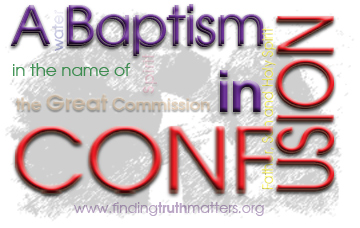 I am lecturing in India. During one of the classes I was asked by several students what the correct baptismal formula was. In Matthew 28:18-19 it is Trinitarian (“in the name of the Father, the Son and the Holy Spirit”), but in the Acts of the Apostles, it is in the name of Jesus. I remember in my youth about hearing of a group of Pentecostals who made this the touch-stone of whether someone was baptised correctly or not. Today there are “Jesus-Only” groups who insist that what appears to be a Trinitarian formula is actually code for “Lord (The Father) Jesus (The Son) Christ (The Holy Spirit)”, which is why, they appeal, the Trinitarian version is no where used in the Book of Acts. In a culture steeped in legalism and superstition, my answer failed to connect with my audience. I left frustrated feeling that I had failed to adequately explain what the Bible teaches about water baptism. I am therefore writing with a sense that I wish I could have conveyed these thoughts in the language of my Indian friends to their satisfaction so that they could see that the Bible does not present a mixed message about Baptism.
I am lecturing in India. During one of the classes I was asked by several students what the correct baptismal formula was. In Matthew 28:18-19 it is Trinitarian (“in the name of the Father, the Son and the Holy Spirit”), but in the Acts of the Apostles, it is in the name of Jesus. I remember in my youth about hearing of a group of Pentecostals who made this the touch-stone of whether someone was baptised correctly or not. Today there are “Jesus-Only” groups who insist that what appears to be a Trinitarian formula is actually code for “Lord (The Father) Jesus (The Son) Christ (The Holy Spirit)”, which is why, they appeal, the Trinitarian version is no where used in the Book of Acts. In a culture steeped in legalism and superstition, my answer failed to connect with my audience. I left frustrated feeling that I had failed to adequately explain what the Bible teaches about water baptism. I am therefore writing with a sense that I wish I could have conveyed these thoughts in the language of my Indian friends to their satisfaction so that they could see that the Bible does not present a mixed message about Baptism.
.
THE PURPOSE OF WATER BAPTISM
 If salvation is by grace, then it is, as Ephesians 2:8-9 says – not of works. This means that salvation from God is a gracious gift received by faith. There is nothing needed in addition to faith, in order to be saved. So, when someone teaches that anything in addition to faith is necessary to qualify someone for salvation, including water baptism, they are preaching different Gospel! (2Cor. 11:4; Galatians 1:6) This is called Baptismal Regeneration. It is the idea that it is water baptism which actually saves someone.
If salvation is by grace, then it is, as Ephesians 2:8-9 says – not of works. This means that salvation from God is a gracious gift received by faith. There is nothing needed in addition to faith, in order to be saved. So, when someone teaches that anything in addition to faith is necessary to qualify someone for salvation, including water baptism, they are preaching different Gospel! (2Cor. 11:4; Galatians 1:6) This is called Baptismal Regeneration. It is the idea that it is water baptism which actually saves someone.
Paul paints a picture of water baptism in Romans 6. In this passage, he describes a believer being identified with Christ in His death by being buried into the water. Paul says that just as Jesus was killed on the Cross then buried in His tomb, when the believer is baptised they are dying to their old way of life, and putting their life of sin to death. But as Jesus was raised from the dead, the believer is raised up from the water.
.
BAPTISM AS A COVENANT CEREMONY
 The link between sealing a covenant and the act of water baptism is made by Paul in Colossians 2. He argues against circumcision by teaching that it was the sign of the Old Covenant. He goes on to say that it is water baptism which is the sealing of the New Covenant. A common type of a covenant was where two parties joined together in an exclusive life-long partnership. They gave each other the right to each other’s property and things. They exchanged symbols of their agreement to defend each other by an exchange of branded weapons (weapons identified as belonging to the other party). They blended their names. They publically pledged their devotion to each other. And they made an incision in their flesh from which they could let their blood mingle as a symbol of their union.
The link between sealing a covenant and the act of water baptism is made by Paul in Colossians 2. He argues against circumcision by teaching that it was the sign of the Old Covenant. He goes on to say that it is water baptism which is the sealing of the New Covenant. A common type of a covenant was where two parties joined together in an exclusive life-long partnership. They gave each other the right to each other’s property and things. They exchanged symbols of their agreement to defend each other by an exchange of branded weapons (weapons identified as belonging to the other party). They blended their names. They publically pledged their devotion to each other. And they made an incision in their flesh from which they could let their blood mingle as a symbol of their union.
When we come to Christ, we enter into a commitment to have a relationship with Him. This commitment is converted into a covenant when we are baptised. In this sense, Water Baptism is more than symbolic, and without being sacerdotal (the mediating magic of a priest), it is sacramental. A sacrament is the term given for something that is –
(i) rich in symbolism;
(ii) ties together the past, the present, and the future; and
(iii) conveys a spiritual reality from Christ.
Water Baptism is indeed rich in symbolism as described in Romans 6:1-4 (the picture of the believer identifying with Christ’s death, burial, and resurrection). It ties the past, present and future together by remembering Christ’s death (the past), celebrating the present (the new convert is being baptised now). And baptism looks to the future hope of our physical resurrection.
.
THE ERROR OF BAPTISMAL REGENERATION
The idea that it is necessary for someone to be baptised in order to be saved, or that it is the actual act of water baptism that actually saves, is the error of ‘baptismal regeneration.’ If Christ’s work is not sufficient for our salvation, then none of us have any hope! If we need to add anything to the finished work of Christ we are no longer trusting His efforts alone for our salvation from sin and reconciliation to God. The idea of Baptismal Regeneration is repulsive to the New Testament witness. With this being the case, then surely, whatever words are used at a believer’s baptism must similarly not be cause of someone’s salvation.
TYPES OF BAPTISMS
It’s worth noting that while baptism means to be washed (Acts 22:16), immersed, submerged, it is not just water that is the substance thought of in the New Testament. Jesus spoke of a baptism of suffering for His two upstart disciples. The apostle Paul spoke of being baptised into the Body of Christ, the Church, and the Holy Spirit.
THE ACCOUNT IN THE BOOK OF ACTS
The confusion over the “correct” baptismal formula begins as we try to understand what the earliest Church did as recorded in the Book of Acts. Since the apparent clarity of Christ’s words in Matthew 28:19 are beyond dispute, the intrigue mounts when we can find no reference to these words being used in Acts. To be even more precise, we do not find any (consistent) “baptismal formula” even being used in the record of Acts!
Acts 2:38 And Peter said to them, “Repent and be baptized every one of you in the name of Jesus Christ for the forgiveness of your sins, and you will receive the gift of the Holy Spirit.
Acts 8:16 for he had not yet fallen on any of them, but they had only been baptized in the name of the Lord Jesus.
Acts 10:48 Acts 10:48 And he commanded them to be baptized in the name of the Lord. Then they asked him to stay a few days. (NKJV)
The question posed to me by one of my students in Rajasthan was based on this dilemma. If Christ had commanded that His followers be baptised in the name of the Father, the Son and the Holy Spirit, then why is there no record of this being done in the Book of Acts? The solution to this intriguing mystery might be solved when we reexamine what Christ actually said in Matthew 28.
.
DOES THE GREAT COMMISSION PRESCRIBE A BAPTISM FORMULA?
When I was asked the question, my interpreter told me that this has been an even greater problem for these pastors because there was a teaching being promoted which taught that the equivalent and correct baptismal formula was “in the Name of the Lord Jesus Christ“. Teachers of this doctrine also taught that if someone was not baptised using the words of this formula, then they were not truly saved! As I have briefly stated, the New Testament teaches salvation by grace, not be works (including baptism) – Ephesians 2:8-9. Therefore, we can dismiss this aberrant teaching, but we are still left with the dilemma: Why didn’t the earliest church use the baptismal formula found in Matthew 28:19?
The Great Commission passage recorded in Matthew 28:19 intrigues me. The Gospel of Matthew has some subtle nuances that are too frequently overlooked by casual readers. For example, the theme of Matthew is Jesus as the Messiah King. The Old Testament prophets foretold of the Messiah who would rule “the nations” (see Psalm 2, Isaiah 2).
Isaiah 42:1 ¶ Behold my servant, whom I uphold,
my chosen, in whom my soul delights;
I have put my Spirit upon him;
he will bring forth justice to the nations.
In Matthew 24, Christ refers to “nations” three times (vss 7, 9, 14). In Matthew 25, Judgment Day is depicted as being a national event. “Nations” is also the emphasis of the Great Commission in Matthew 28. The latter section of the Gospel of Matthew seems to have this “nations” emphasis.
Not only is there a national emphasis in the latter part of Matthew, the Great Commission seems to culminate this emphasis and call for the followers of Christ to take His Name, His story and His teachings to the nations in a way that saturates, or baptises, the nations in it. That is, the baptism referred to in Matthew 28:19 in all probability is not necessarily water baptism and therefore the words “in the name of the Father, the Son and Holy Spirit” is not a formula but it is more likely to be an indentifier of the One True God revealed in the Trinity.
 Objections to this view may include pointing out the nuances which the other Synoptic Gospels (Mark and Luke) place on their renditions of the Great Commission. If it can be shown that they present the same scene as Christ commanding that individuals are the subject of the command to be water baptised, then the idea of nations being “baptised into the name” of (the truth of, the story about, and the teachings from) God the Father, God the Son and God the Holy Spirit could be readily dismissed. But upon examination, this dismissal can not be made too quickly based on these other accounts.
Objections to this view may include pointing out the nuances which the other Synoptic Gospels (Mark and Luke) place on their renditions of the Great Commission. If it can be shown that they present the same scene as Christ commanding that individuals are the subject of the command to be water baptised, then the idea of nations being “baptised into the name” of (the truth of, the story about, and the teachings from) God the Father, God the Son and God the Holy Spirit could be readily dismissed. But upon examination, this dismissal can not be made too quickly based on these other accounts.
Just as each Synoptic Gospel focusses on a particular aspect of Christ (Matthew emphasises Christ as the Messiah and King of the nations, Mark emphasises Christ as the Servant Worker, and Luke emphasises Christ as the Man of Compassion) so each telling of the Great Commission similarly continues these themes-
In Mark-
Mark 16:15-16 And he said to them, “Go into all the world and proclaim the gospel to the whole creation. Whoever believes and is baptized will be saved, but whoever does not believe will be condemned.”
In Luke-
Luke 24:46 and said to them, “Thus it is written, that the Christ should suffer and on the third day rise from the dead, and that repentance and forgiveness of sins should be proclaimed in his name to all nations, beginning from Jerusalem.
Each of the Synoptic Gospels renders the Great Commission with their consistent emphasis on how they each portray Christ. There is therefore a case that the Great Commission referred to in Matthew 28 focusses on “nations.”
.
BELIEVER’S BAPTISM
 Accepting this option (that Matthew 28 is focussed on nations and baptism in this sense carries the idea of “saturating a nation in the Gospel”), does not dismiss that the mark of following Christ in a covenant relationship is indeed individual water baptism. As discussed earlier above, water baptism is the symbol/ceremony/“sacrament” of a believer’s covenant with Christ which they participate in after their conversion. But, there does seem to be a case for a distinction between the Great Commission in the Gospel of Matthew for nations to be discipled, and the account in Mark where the emphasis is on individuals to be baptised subsequent to their conversion. Taking this approach makes it possible to treat Scripture consistently, and explains why the earliest Church did not use Matthew’s “baptism formula” to baptise individuals.
Accepting this option (that Matthew 28 is focussed on nations and baptism in this sense carries the idea of “saturating a nation in the Gospel”), does not dismiss that the mark of following Christ in a covenant relationship is indeed individual water baptism. As discussed earlier above, water baptism is the symbol/ceremony/“sacrament” of a believer’s covenant with Christ which they participate in after their conversion. But, there does seem to be a case for a distinction between the Great Commission in the Gospel of Matthew for nations to be discipled, and the account in Mark where the emphasis is on individuals to be baptised subsequent to their conversion. Taking this approach makes it possible to treat Scripture consistently, and explains why the earliest Church did not use Matthew’s “baptism formula” to baptise individuals.
The baptismal task before us today is then two-fold: (i) baptise nations into the Name of the Father, Son and Holy Spirit (understood as “The Gospel revelation found in the Scriptures from Genesis to Revelation”); (ii) baptise individuals subsequent to their acceptance of this Gospel. May God grant us the grace to fulfil His Commission to us.
Dr. Andrew Corbett
© October 19th 2009, writing from Rajasthan, India.
-
Sale!
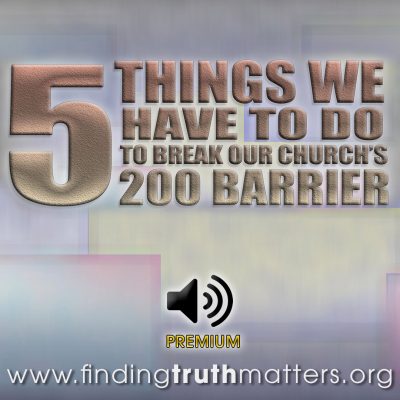
5 Things We Need To Do To Break Our Church’s 200 Barrier, Premium Audio
Original price was: $1.75.$0.95Current price is: $0.95. -
Sale!

A Morning With Izaak Walton – The Compleat Man, Premium Audio
Original price was: $1.75.$1.25Current price is: $1.25. -
Sale!
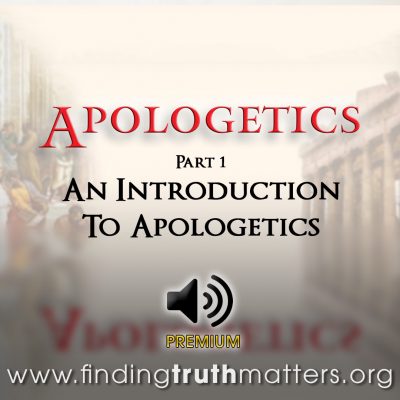
Apologetics Part 1 – Introduction To Apologetics, Premium Audio
Original price was: $1.75.$0.95Current price is: $0.95. -
Sale!
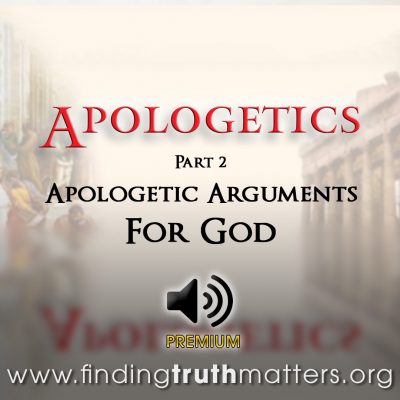
Apologetics Part 2 – The Apologetic Arguments For God, Premium Audio
Original price was: $1.75.$0.95Current price is: $0.95. -
Sale!
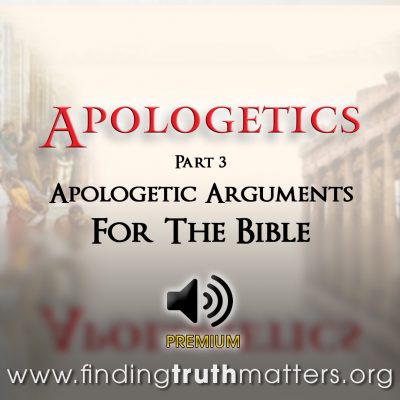
Apologetics Part 3 – The Apologetic Arguments For The Bible, Premium Audio
Original price was: $1.75.$0.95Current price is: $0.95. -
Sale!
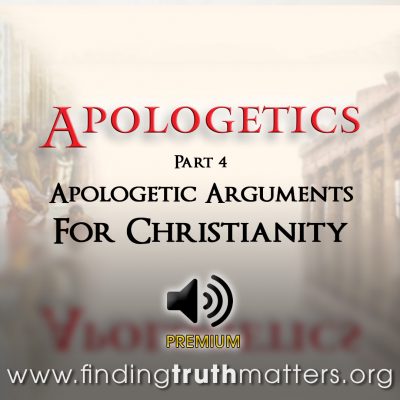
Apologetics Part 4 – The Apologetic Arguments For Christianity, Premium Audio
Original price was: $1.75.$0.95Current price is: $0.95.







































0 Comments